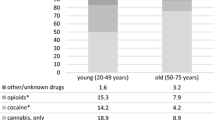Abstract
Design: Cross‐sectional survey Setting: The county of Malmöhus, with 817,000 inhabitants, in the far south of Sweden. All drugs handed in for destruction to the 65 pharmacies during one week in March 1996 were analysed. Results: 92% of the packages were prescription drugs for human use, 7% were over‐the‐counter drugs, and 1% were for veterinary use. Slightly less than half (48%) had expired when they were handed in for destruction. 36% were unbroken when returned and another 18% of the packages were nearly full. A comparison between the drugs sent in for destruction and the drugs sold in the county gave a ratio of 0.030. Antineoplastic and immunosuppressive drugs, drugs for the respiratory system, antiparasitic products, and cardiovascular drugs were returned to a greater extent than other types of drugs. Drugs for the genito‐urinary tract, sex hormones, and drugs for the alimentary tract were returned to a lesser extent. Extrapolated to a whole year the value of caseated drugs was estimated to 60 SEK (5.83 Br ,) per person. The value of unbroken packages was 20 SEK (1.94 Br,) per person per year. Conclusion: Although not all of the drugs handed in for destruction could have been unnecessarily prescribed or obtained by the patient, a more cautious approach to prescribing of drugs would likely yield significant savings.
Similar content being viewed by others
References
Nordenstam I, Wennberg M, Burman K. Svensk läkemedelsstatistik 95 (Swedish statistics on medicines 95). Stockholm: Apoteksbolaget, 1996.
SAS. SAS/STAT Users Guide, Version 6, 4th edition, Vols 1 and 2. SAS Institute, Cary, NC., 1989.
Bray M, Ghose K. Nurse's attitudes to and knowledge of medicines. Nurs Prax 1993;8:20-28.
Dunnel K, Cartwright A. Medicine takers, prescribers and hoarders. London and Boston: Routledge & Kegan Paul, 1972.
Ostrom J, Hammrlund E, Christensen D, Plein J, Kethley A. Medication usage in an elderly population. Med Care 1985;23:157-64.
Åberg H. Studie av läkemedelsförråden i hemmen: Tre av fyra kvinnor och tre av fem män medicinerar. Avställda läkemedel lämnas inte tillbaka till apotek (Study of drugs at home: Three out of four do not return non-used drugs to the pharmacies). Läkartidningen 1985;93:912-16.
Skogsberg U, Hedner J, Carlsson G, Johnsson B, Westergren M. Alltför stora förråd i de äldres medicinskåp (Too large supplies in medicine cabinets of the elderly). Läkartidningen 1996;93:915-16.
Segall AA. Community survey of self-medication activities. Med Care 1990;28:301-10.
Bergström R, Höög S. The impact of over-the-counter swithes on the product life cycles of 15 pharmaceutical products in Sweden. Journal of Pharmaceutical Marketing & Management 1994;9:25-68.
Rights and permissions
About this article
Cite this article
Isacson, D., Olofsson, C. Drugs up in smoke: a study of caseated drugs in Sweden. Pharm World Sci 21, 96–99 (1999). https://doi.org/10.1023/A:1008626306770
Issue Date:
DOI: https://doi.org/10.1023/A:1008626306770




